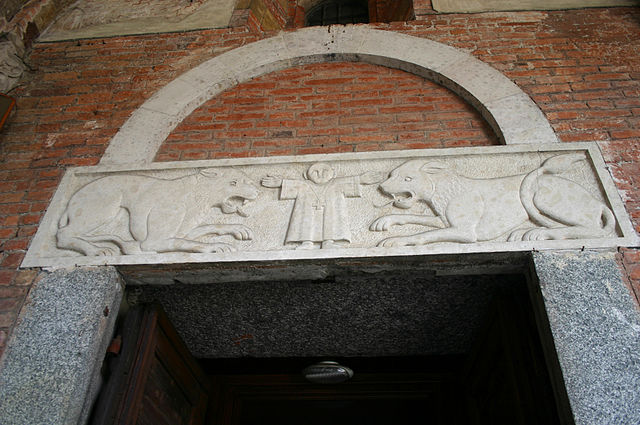Loading AI tools
Lintel beam element in Classical architecture From Wikipedia, the free encyclopedia
In classical architecture, an architrave (/ˈɑːrkɪtreɪv/; from Italian architrave 'chief beam', also called an epistyle;[1] from Ancient Greek ἐπίστυλον (epistylon) 'on the column') is the lintel or beam, typically made of wood or stone, that rests on the capitals of columns.[2]
You can help expand this article with text translated from the corresponding article in German. (May 2010) Click [show] for important translation instructions.
|


The term can also apply to all sides, including the vertical members, of a frame with mouldings around a door or window. The word "architrave" has come to be used to refer more generally to a style of mouldings (or other elements) framing a door, window or other rectangular opening, where the horizontal "head" casing extends across the tops of the vertical side casings where the elements join (forming a butt joint, as opposed to a miter joint).[3]
In an entablature in classical architecture, it is the lowest part, below the frieze and cornice. The word is derived from the Greek and Latin words arche and trabs combined to mean "main beam". The architrave is different in the different Classical orders. In the Tuscan order, it only consists of a plain face, crowned with a fillet, and is half a module in height. In the Doric and Composite order, it has two faces, or fasciae, and three in the Ionic and Corinthian order, in which it is 10/12 of a module high, though but half a module in the rest.[4]
The term architrave has also been used in academic writing to mean the fundamental part of something (a speech, a thought or a reasoning), or the basis upon which an idea, reasoning, thought or philosophy is built.
Examples:
In śilpaśāstra, the Hindu texts on architecture, the architrave is commonly referred to by its Sanskrit name uttara.[7] In Hindu temple architecture it is placed above the bracket (potika) of a pillar (stambha), which gives it extra support. The Indian entablature is called prastara.
Dravidian architecture recognizes several distinct types of architraves:[8]
Seamless Wikipedia browsing. On steroids.
Every time you click a link to Wikipedia, Wiktionary or Wikiquote in your browser's search results, it will show the modern Wikiwand interface.
Wikiwand extension is a five stars, simple, with minimum permission required to keep your browsing private, safe and transparent.